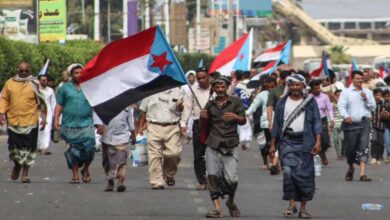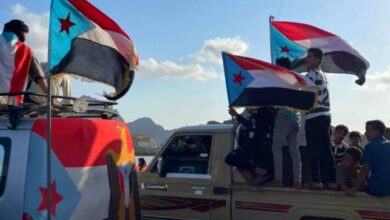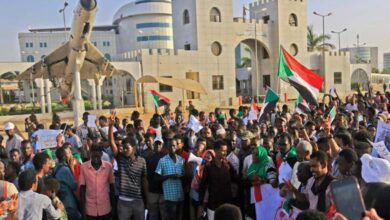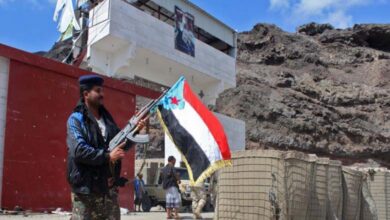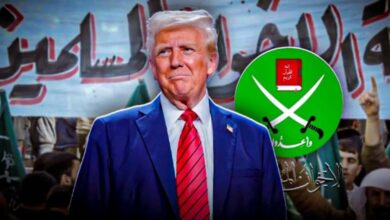Iran in Africa under Raisi… Sudan leading the way Iran in Africa

Iran in Africa… Economy and other things
Iran’s interest in Africa is not a new phenomenon; it dates back to the years before 1979, where Iran’s regional expansion plans were linked to crossing the Indian Ocean to establish its foothold on the shores of East Africa, and then venturing further into the African continent to achieve numerous economic and political gains.
Iran’s efforts to initiate and solidify its economic relations with many influential African countries represent a new phase in a series of attempts to reactivate its foreign policy, especially in strategically important regions, and to steer towards new horizons in Africa, reinforcing the notion that it remains a foreign policy priority. Thus, Iran encourages institutionalizing efforts to strengthen economic and trade relations with African countries.
Iran’s policy in Africa has witnessed two major waves of expansion, the first emerging during Mahmoud Ahmadinejad’s presidency, as part of an Iranian foreign policy promoted as adopting an openness towards Southern countries, particularly African nations, and touted as a “successful” experiment in using soft power tools and international partnerships based on achieving common interests. With the failure of the first wave of opening up to Africa to achieve the desired political or economic returns, and with many of Iran’s allies in Africa turning into adversaries, Iran has recently returned to opening up to Africa in a new wave, embodied by a key instrument in the form of “sleeper cells” seeking to exploit the conditions of African countries to turn them into battlegrounds against Iran’s regional and international adversaries.
To assess the dimensions of Iran’s new wave of expansion attempts in Africa, three fundamental observations can be made: first, the geographical scope of Iranian activities widening and moving away from the East of the continent, which traditionally represented the preferred arena for activities, and second, Iran’s necessity to engage in successive cycles of rapprochement and distancing with African countries, which expect Iran to play a “proxy” role for Iranian interests on the continent, a demand that is often met with rejection or cautious acceptance. The third observation relates to Iranian structural problems that have prevented the establishment of sustainable and effective partnerships in Africa, despite increased interest in the last two decades due to internal Iranian contradictions in terms of goals and means.
Iran adopts a hybrid policy in its influence within Africa, combining Shiite Islam, economics, cultural relations, and military support. It currently applies the concept of “Shiite geopolitics” due to the failure of the principle of “exporting the revolution,” a concept entrenched in Iranian policy since the Iraq War in 2003 to contain the Sunni space stretching from the Gulf to the ocean. To implement this strategy, Iran relies on three factors:
Firstly, its aspiration to become the closest power to Africa by minimizing international and regional efforts to resolve African crises, a perspective readable with regional and international efforts to resolve crises in Sudan, Ethiopia, Mali, Somalia, and elsewhere. Even though its intervention is belated, if successful, it will neutralize international efforts and emerge as a supporting country for the African continent.
The second factor is Africa’s attractive demographics, as most of the youth expected to be absorbed into the labor market over the next decade will be numerous, contrasting with the aging of Iranian society, threatening the country’s system and economy.
The third factor is Iran’s readiness to deal with Africa by following the Chinese approach based on cooperation in development, with some differences between the two countries. China does not interfere in the internal affairs of countries, but Iran will not be able to ignore this, although this time, the interference may not be as blatant due to the recognition that this may be the last opportunity for expansion in a turbulent region.
Amidst turmoil in several countries and regions of the continent, especially Sudan, Iran seeks to exploit this alternative arena to achieve qualitative gains, especially since Iran has networks of agents in Africa sharing its religious identity, such as the Zakzaky movement in Nigeria and Hezbollah cells in some African countries, among others. These currently covert relationships could transform into a radical Shiite movement transcending nationalities under Iran’s leadership. However, Iran appears pragmatic in its relations with each African country it seeks to consolidate, not focusing solely on the religious dimension, as each country presents different advantages; for example, Eritrea overlooks the Bab el-Mandeb Strait, Sudan connects the East and West of the continent at a vital crossroads that contributes to spreading Shiism with commercial and cultural movements, while West African countries like Nigeria and Senegal seem ready to strengthen these relations due to the presence of some Islamic movements supporting Shiism. This hybrid policy means that Iran continues to maintain its relations and influence in Africa according to a national strategic vision that serves Iran’s political and economic interests on the African continent.
To circumvent American and other sanctions, Iran has begun to adopt a new policy for its activity in Africa based on investing in groups of knowledge-based companies, which are usually private organizations seeking to market research results, particularly in medicine, improve the food supply chain, mechanize agriculture, and maximize crop production. Since these small businesses belong to the private sector and are linked to humanitarian products, they are less exposed to sanctions.
As information has emerged about a three-year plan, Iran’s exports to Africa are expected to reach $1.1 billion, with about €200 million in support for Iranian exports to Africa. This is a clear sign of Iran’s resurgence in Africa, and its efforts to enhance its economic relations with the continent, as Iran’s foreign policy towards Africa has historically been significant.
Iran has been diligently working to strengthen its relations with African countries along the Red Sea, starting with Sudan, Eritrea, Djibouti, Somalia, and Ethiopia. In the case of Sudan, US policies towards the country, labeling it as a sponsor of terrorism and imposing economic and political sanctions, pushed it into the Iranian and Chinese embrace, seeking an ally to counter American sanctions and alleviate their impact on Sudan and its regime.
To justify its presence in Eritrea, for example, a country with long coastlines along the Red Sea, facing Yemeni and Saudi coasts, Iran stated that the presence of some of its military and naval forces at Eritrean ports is to combat piracy and protect maritime routes to secure commercial ships. However, Iran has undisclosed hidden objectives related to oil refinery facilities and ship protection. Among these objectives is Iran’s presence in two of the world’s most important waterways, the Strait of Hormuz and the Bab el-Mandeb strait. Iranian presence in Somalia involves strengthening ties with a local partner armed with Iranian support in areas aimed at influencing the future, as well as maintaining relations with Sufi armed groups for future use, potentially making Somalia a card Iran could use to maintain international balance, along with Iranian warships stationed in Somali waters to protect Iranian commercial ships.
The signing of the Iranian nuclear agreement in 2015, known as the Joint Comprehensive Plan of Action (JCPOA), relieved the pressure on many African leaders to seek better opportunities to deal with Iran, prompting Iran to rush to enhance its involvement with Africa while simultaneously seeking to build a “strategic depth” across the continent to bolster Iranian influence. However, President Donald Trump’s withdrawal from the nuclear agreement and the reinstatement of sanctions against Iran in 2018 compelled Iran to work to maintain relations with African countries. In response, Iran’s Supreme Leader Ayatollah Ali Khamenei called for an “African Axis” policy to circumvent sanctions and escape their repercussions.
Sudan in a Central Role…
It is clear that Ebrahim Raisi has been active in pushing the African agenda since early in his tenure; on his third day in office, he called for increased cooperation with Africa and acknowledged its material and human capabilities. On August 6, 2021, Raisi reiterated the same message, adding that enhancing relations would be a priority in his country’s foreign policy, and that his government would seriously activate all potentials for cooperation with African countries.
Raisi likely aspires to rekindle relations between Iran and Africa against the backdrop of his country’s neglect of Africa and the loss of old allies and major trade partners on the continent during Rouhani’s tenure. So far, this effort seems to have made limited progress, as Raisi has only met with officials from second and third-tier African countries for bilateral trade, such as Mozambique, Togo, and Guinea-Bissau, rather than countries of primary importance like Sudan, Djibouti, and Somalia, all of which severed ties with Iran during Rouhani’s presidency. While Mozambique, Togo, and Guinea-Bissau may represent less significant trade partners, they hold historical importance and provide strategic value.
Raisi needs to tread carefully as he ventures into Africa, which he began with Sudan, announcing on October 9th of last year the resumption of diplomatic relations with Iran, which had been severed by Khartoum. In early 2016, Sudan sided with Saudi Arabia, then in conflict with Tehran at the time.
Iran provided military extensions to the Sudanese army and facilitated arms transfers to Hamas, received by training units of the Iranian Revolutionary Guard Corps. A second batch comprising over 50 officers and technicians was sent by the Sudanese army for operational training as special forces.


